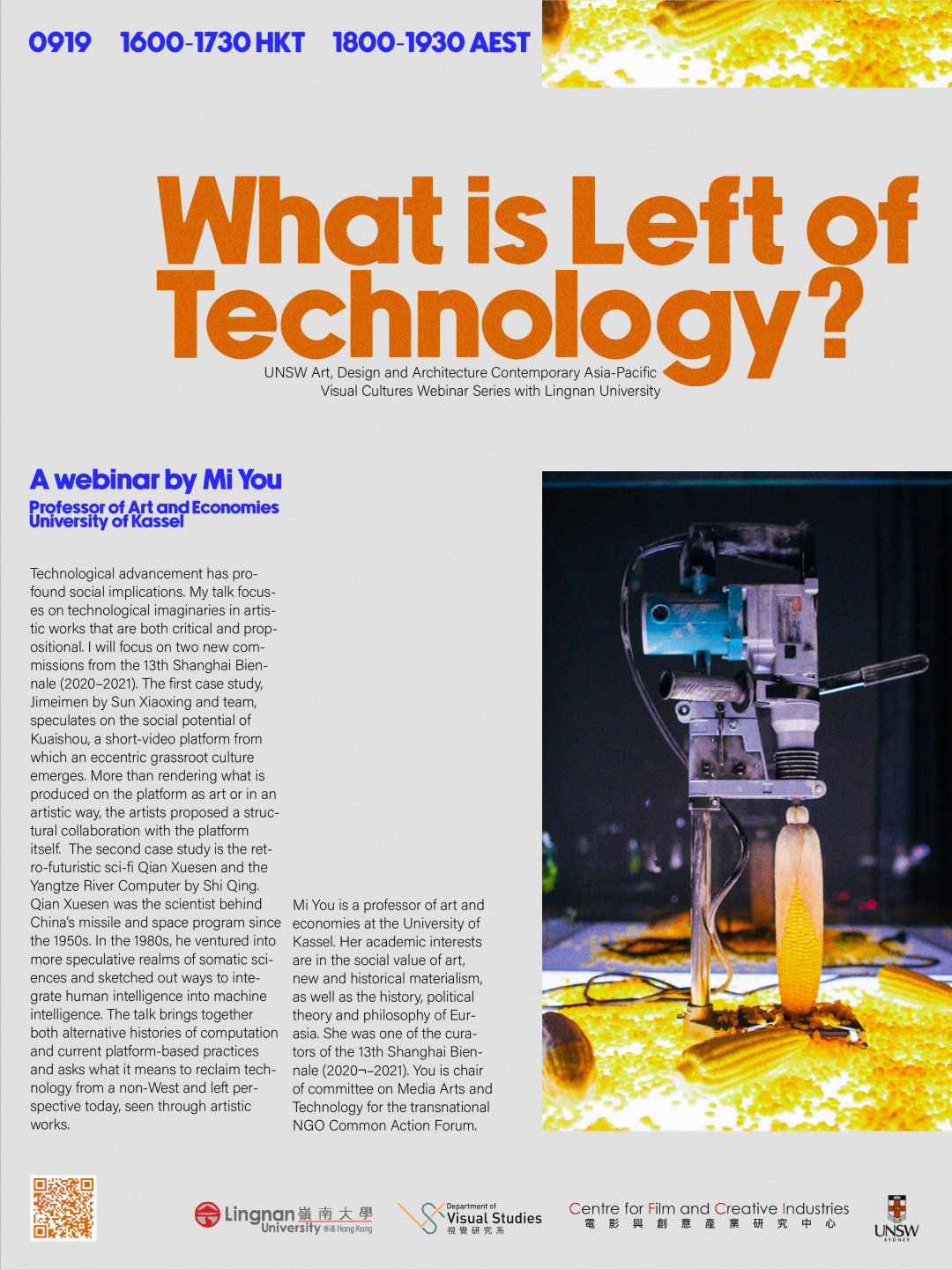Ling U
Ling U
Ling U
Ling U
Ling U
Contemporary Asia-Pacific Visual Cultures
Joint Webinar Series

What is Left of Technology?
Professor of Art and Economies, University of Kassel
| Date | : | 19 September 2022 (Monday) | ||
| Time | : | 4:00 - 5:30 pm HKT | ||
| Format | : | Online via Zoom | ||
| Language | : | English | ||
| Registration | : | Please click here |
| Biography |
|---|
| Mi You is a professor of art and economies at the University of Kassel. Her academic interests are in the social value of art, new and historical materialism, as well as the history, political theory and philosophy of Eurasia. She was one of the curators of the 13th Shanghai Biennale (2020¬–2021). You is chair of committee on Media Arts and Technology for the transnational NGO Common Action Forum. |
| Abstract |
| Technological advancement has profound social implications. My talk focuses on technological imaginaries in artistic works that are both critical and propositional. I will focus on two new commissions from the 13th Shanghai Biennale (2020–2021). The first case study, Jimeimen by Sun Xiaoxing and team, speculates on the social potential of Kuaishou, a short-video platform from which an eccentric grassroot culture emerges. More than rendering what is produced on the platform as art or in an artistic way, the artists proposed a structural collaboration with the platform itself. The second case study is the retro-futuristic sci-fi Qian Xuesen and the Yangtze River Computer by Shi Qing. Qian Xuesen was the scientist behind China’s missile and space program since the 1950s. In the 1980s, he ventured into more speculative realms of somatic sciences and sketched out ways to integrate human intelligence into machine intelligence. The talk brings together both alternative histories of computation and current platform-based practices and asks what it means to reclaim technology from a non-West and left perspective today, seen through artistic works. |


